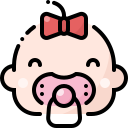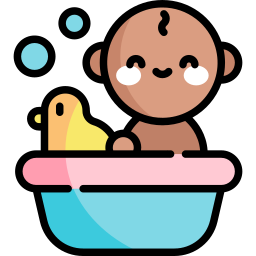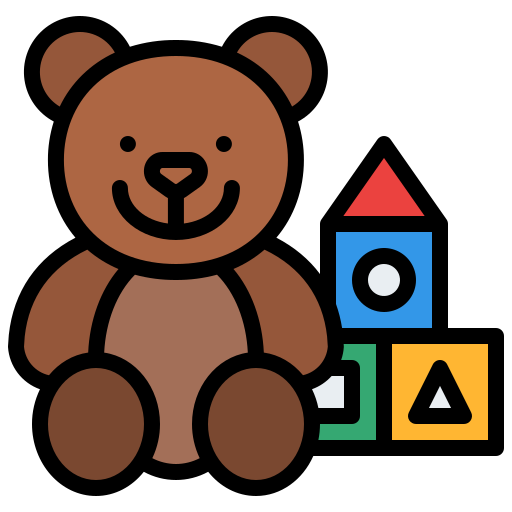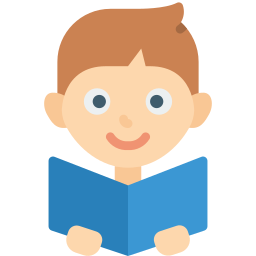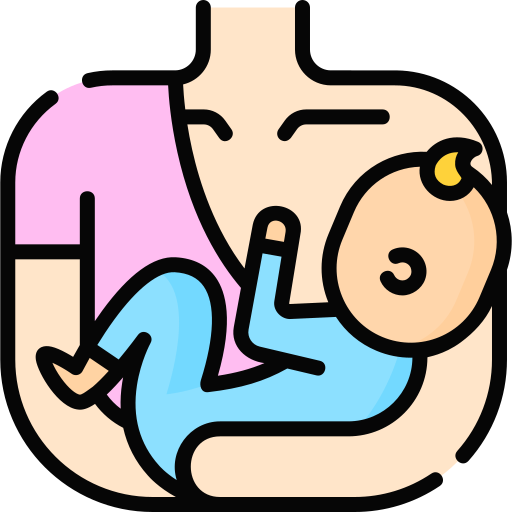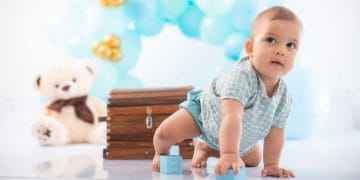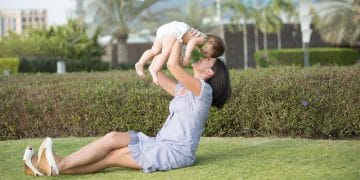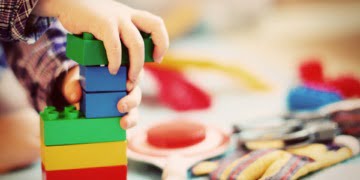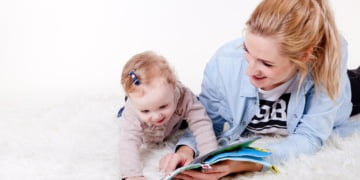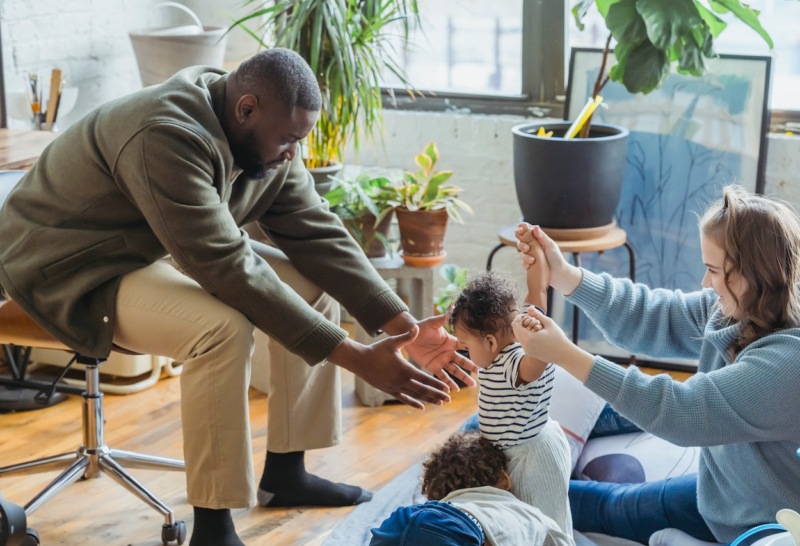As parents and caregivers, we want nothing more than to support our baby’s earliest steps—physically, emotionally, and mentally.
Although newborns sleep much of the day and their movements are minimal, their brains are hard at work.
Even in those early weeks, simple toys and sensory experiences can help build neural connections, laying the groundwork for future cognitive, motor, social, and emotional development.
In this article, we’ll explore how newborn brain development works, what types of toys are most beneficial, key safety and usage tips, and concrete toy recommendations.
By the end, you’ll be better equipped to choose toys that do more than entertain—ones that truly support your baby’s growing brain.
How Newborn Brain Development Works
Before choosing toys, it helps to understand what’s going on inside that little head.
- Rapid neural growth. From birth through the first few months, a baby’s brain is making billions of connections (synapses). The brain is especially responsive to sensory input—sight, sound, touch, smell, and taste.
- Sensory prioritization. Early on, vision is limited (newborns see best at about 8–12 inches away and are especially drawn to high-contrast colors and simple shapes).
- Motor development and muscle strengthening. Head control, tummy time, limb movement—all these encourage physical coordination that connects with brain development.
- Cause and effect, attention, and early cognition. When a baby shakes a rattle and hears a sound, or touches a soft toy, or watches your face follow movement—it starts to understand the world: that actions have results, that things exist even if out of sight (“object permanence”), etc.
So the best toys are those that engage their senses, motivate movement (even small), invite exploration, and encourage repeated interactions.
What to Look for in Toys for Newborns
Here are criteria to keep in mind when selecting toys for newborn brain development:
- High-contrast visuals
Newborns see high contrast more clearly than subtle shades. Black & white or bold contrasting colors help strengthen visual tracking and focus. - Safe for mouthing / touching
Babies explore with their mouths. Non-toxic materials, smooth edges, no small detachable parts are essential. - Varied textures and sensory input
Toys that are soft, crinkly, smooth, or have different fabrics/textures give tactile feedback. Sounds (rattles, soft bells) provide auditory stimulation. - Opportunity for movement / motor activation
Toys that encourage reaching, grasping, kicking, tummy time exercises, or visual tracking are especially useful. - Simple cause-and-effect
Things baby can manipulate (rattle, shaker, soft blocks) to hear noise or feel vibration teach early cognitive lessons: “if I do this, then that happens.” - Not overly complicated
Overstimulation or too many toys can overwhelm a newborn. Simple is better in the early weeks. - Durability and ease of cleaning
Soft toys that can be washed, materials that can be wiped down, no dangerous parts.
Best Types of Toys by Developmental Stage (0–4 Months)
Here are some categories of toys / playthings that are especially beneficial in the first few months of life:
| Age Range | Toy / Type | Why It’s Helpful |
| 0–2 months | High-contrast cards/board books | Supports visual development; helps baby focus and follow patterns. |
| Soft rattles or lightweight hand-held toys | Encourages grasp reflex, hand–eye coordination, cause and effect. | |
| Mirror toys or baby-safe mirrors (held in front) | Visual curiosity; beginning recognition of shapes; stimulation. | |
| 2–4 months | Tummy time mats with visual/sound features | Strengthens neck/back muscles; helps with motor control. |
| Soft texture toys, tags, crinkly fabrics | Encourages tactile exploration. | |
| Teethers / chewable toys (safe materials) | Oral motor work; soothing during gums’ growth. | |
| Soft blocks or nesting cups | Beginning of shape exploration; helps with grasping and releasing. |
Safety Guidelines & Tips for Using Toys
While choosing “brain-building” toys is important, safety and how you use them matter just as much.
- Always supervise. Even “safe” toys can become hazards (choking, suffocation) if unsupervised.
- Age-appropriate designations. If the toy says “0+ months” or “newborn safe,” that’s a start. But check parts & materials.
- Cleaning and hygiene. Babies put everything in their mouths—wash or sterilize soft toys and teethers regularly.
- Rotate toys. Don’t have dozens out all at once. Having a few good toys rotated keeps novelty without overwhelming baby.
- Use the toys actively. It’s not just the toy, but how you interact: move a rattle so baby follows with their eyes; read a high-contrast book while breastfed or in arms; play peek-a-boo; give time on tummy. These social and interactive uses enhance impact.
- Watch for over-stimulation. If baby is turning away, fussing, yawning, or seeming stressed, it’s time to calm down.
Top Toy Ideas / Examples
Below are specific toy types (and some example features) that are especially good for fostering newborn brain development. (I’m not naming specific brands to avoid bias, but you can insert your own product links or examples.)
- High-Contrast Board/Cloth Books
Books with simple black & white patterns, or high-contrast animals/faces. These will help with visual tracking, attention span, early literacy exposure, and bonding if you read softly to baby. - Rattles & Shakers
Lightweight rattles that are easy to grip. When baby shakes, they hear sound and begin associating actions with effects. Also good for hand strength and coordination. - Soft Plush / Crinkly Textured Toys
Those with different fabrics (velvet, cotton, crinkle foil, etc.) give tactile feedback. Crinkling sounds add auditory stimulation. - Baby Mirrors
Bringable or attachable to baby’s play area (ensuring safety). Babies love looking at faces—including their own. Encourages visual tracking, self-awareness (later), and sociability. - Tummy Time Mats / Gyms
Mats with dangling toys you can move; bright patterns; soft cushion for comfort. The more baby enjoys tummy time, the more they build neck, shoulder, and core muscles. - Teethers
Cool, safe teethers (food-grade silicone, natural rubber) help when gums start to feel uncomfortable; also help sensory input through touch & mouth. - Soft Blocks or Nesting Cups
Even very simple versions. Helps with grasping, stacking, learning about space and balance. - Musical Toys / Soft Sounds
Toys that make soft sounds, rattles, music boxes. Repetitive tunes or lullabies can be soothing and help auditory brain regions. - Mobiles or Overhead Toys
Simple mobiles with contrasting shapes, gentle movement. Perfect above crib or changing area (ensuring safety) so baby can watch movement, focus, track visually. - Parent / Caregiver as Toy
Don’t forget: faces, voices, touch, cuddles, and social interaction are the most powerful “toys” of all. Peek-a-boo, mimicking baby’s sounds, gentle games—that human side magnifies anything a physical toy can do.
Toy List Suggestions You Might Love
Here are a few specific toy ideas / features to look for—if you’re shopping. These will give you a sense of what to look for, and can be links or product posts on your site.
- A high-contrast board book that opens wide and has fold-out pages
- Lightweight rattle or shaker designed for baby’s hand
- Crinkly fabric toy with a mirror patch
- Soft baby gym / play mat with overhead hanging elements
- Natural rubber or food-grade silicone teether, maybe in a shape baby can grip
- Soft stackable cups or rings (large, gentle colors)
- Simple mobile with black & white or bold shapes and slow movement
- Music box or gentle sound toy with volume control
Research & What Experts Say
Some of the findings from research and expert sources:
- Sensory-rich toys (textures, sounds, visual contrast) promote sensory integration and help the brain form connections in multiple areas.
- Tummy time is not just physical exercise—it’s crucial for visual development, balance, posture, cognitive mapping of space.
- A smaller number of toys, thoughtfully chosen, tends to produce deeper, more meaningful engagement than a large number of distractions. Too many toys can lead to superficial or fragmented play.
- Repetition and consistency matter—repeated exposure to the same toy helps babies build memory, familiarity, and secure expectations.
Sample Play Routine: How to Use Toys to Boost Development
Here’s a sample daily/weekly routine to maximize benefit:
Time of Day | Activity & Toy Suggestions |
Morning | After waking, spend 5–10 minutes of tummy time with a high-contrast play mat or soft gym; move a rattle for visual tracking. |
Mid-morning | Soft music or lullabies; cuddle time with a high-contrast cloth book; read or show pictures. |
Afternoon | Teether during downtime; maybe soft block stacking or cup nesting when awake and alert. |
Evening | Quiet mobile over crib to watch slow movement; soft plush toy; gentle rattles or sound toy in low lighting. |
Throughout | Caregiver interaction: singing, talking, responding to baby’s coos, playing peek-a-boo; use toys as tools of interaction, not just background. |
When to Introduce What
- First few weeks (0–2 months): Focus heavily on high-contrast visuals, soft sounds, gentle touch. Tummy time as soon as possible (with supervision).
- 2–4 months: More interaction—rattles, mirrors, soft textures; baby may start reaching, grasping. Increase tummy time lengths, maybe more varied toys.
- 4–6 months onward: As baby develops more strength and dexterity, more varied toys can be introduced (stacking, grasping, climbing, more robust textures, louder sounds). But always ensure safety.
Common Mistakes & What to Avoid
- Choosing toys based on how cute they are, rather than how developmentally appropriate.
- Overloading with many toys at once—this can reduce the time baby engages with each toy meaningfully.
- Buying complex electronic toys too early—may distract rather than help sensory development; risk of overstimulation.
- Neglecting hygiene—dirty toys are a health risk.
- Forgetting caregiver involvement—just giving a toy is less potent than joint play, talking, responding, playing together.
Conclusion
Newborn brain development is a miraculous, fast-paced process.
While your baby’s first weeks will be full of feeding, sleeping, diaper changes, and bonding, the right simple toys—high-contrast visuals, soft sounds, textures, safe teethers, and things to reach and grasp—can provide gentle stimulation that helps build lasting connections in the brain.
The best toy isn’t necessarily the most expensive or high tech—it’s one that’s safe, simple, engaging, and used in love and interaction with caregivers.
So choose a few that resonate with your baby, rotate them, enjoy playing and bonding, and watch your newborn grow in cognitive, motor, emotional, and social ways.



